AFBI’s advice on managing heavy grass cover in early spring for silage production
Date published:
As the days lengthen and signs of spring start to appear, thoughts turn to the 2019 grass growing season and how best to manage swards.
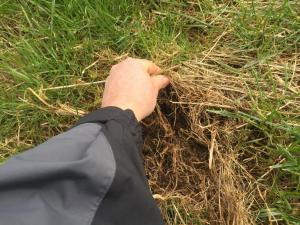
However, the best laid plans are always at the mercy of the weather and although there has been a huge contrast between this past autumn/winter and what we experienced in 2017, farmers in NI are currently facing heavy grass covers again. That’s why over the past year, using funding from the Department of Agriculture, Environment and Rural Affairs, the Agri-Food and Biosciences Institute at Hillsborough has been studying how best to manage swards which have excess cover in late winter/early spring to maximise the future quantity and quality of silage swards.
Two contrasting autumns
During 2017 adverse weather conditions were experienced throughout Northern Ireland, with average rainfall reaching 149% and 110% of the long-term average for late summer and autumn respectively. AFBI’s GrassCheck weather station network recorded soil moisture levels that were significantly higher than field capacity during this time, which highlighted the difficulty that many farmers were experiencing in harvesting late summer silage. As a result many farmers failed to harvest late second and third cut silage in 2017. Many of these farms were left with large amounts of standing herbage carried over into early spring 2018. Previous research had highlighted that such scenarios lead to poor growth and quality of spring swards, but no management guidance had been produced to help farmers deal with the problem.
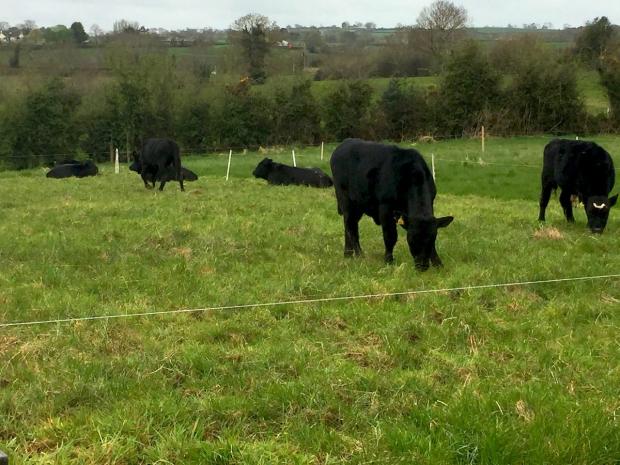
So despite totally different late autumn and overwinter conditions in 2017 and 2018, some farms are once again having to manage heavy covers of grass on ground closed off since September.
Lessons learnt from spring 2018
The weather in March and April 2018 brought prolonged wet, cold conditions as well as the ‘beast from the east’ which resulted in a very late spring. Similar to many farms, the AFBI Hillsborough farm had some outlying silage fields with heavy grass stands as they were left uncut from early autumn. This presented a unique opportunity to investigate how to manage these swards to maximise the quality and quantity of the resultant silage. These swards had a high proportion of dead and decaying material and key questions were: Is it best to remove this material through cutting and baling or grazing? What impact would these options have on subsequent 1st and 2nd cut silage performance?
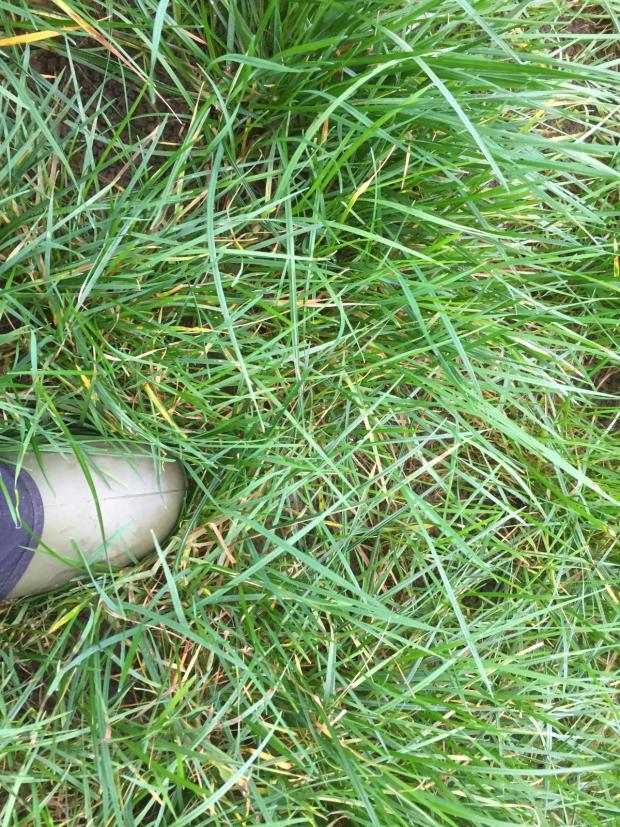
- ‘Early graze’ areas were rotationally grazed using one day paddocks with weanlings from late March to early May (picture 1)
- ‘Early cut’ areas were harvested and big baled each week during the same 5 week period, i.e. 1/5 of the area was cut and baled each week.
- ‘Leave to grow’ areas were allowed to continue growing until ready for first cut silage.
The trial ran from late March to mid July 2018 and all three areas were assessed for yield and quality at first and second cut silage.
Results
With regard to quantity, there were similar first cut yields when ‘early grazing’ and ‘early cutting’ were used but the sward which was left to grow had the highest yield (2162 kg DM/ha more) (Figure 1). However, there was no difference in second cut yield and when the grazed yield and big bale yield in the early season were added in, the total sward production up to mid-July was similar for all three systems.
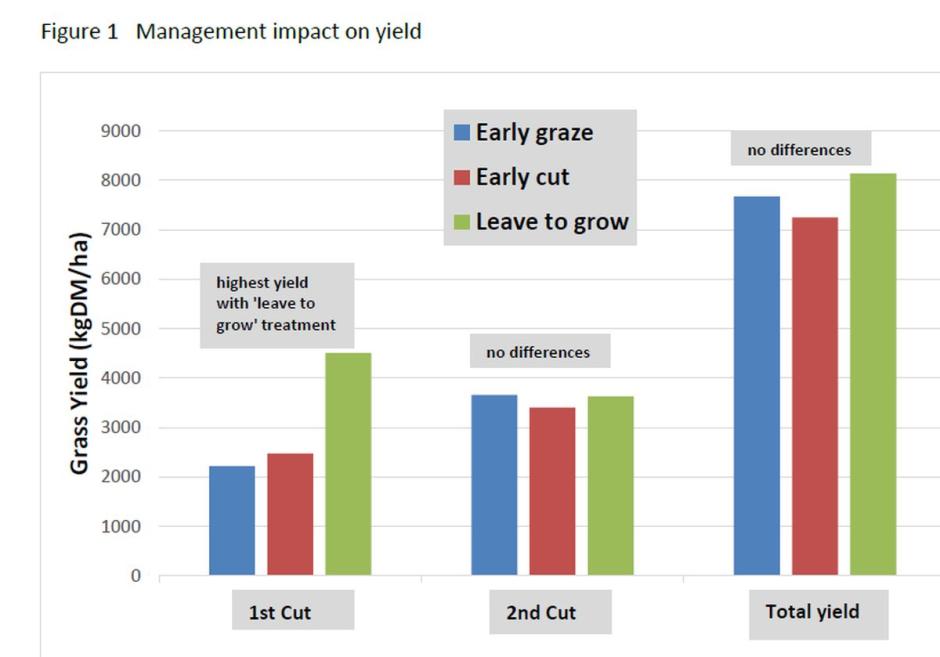

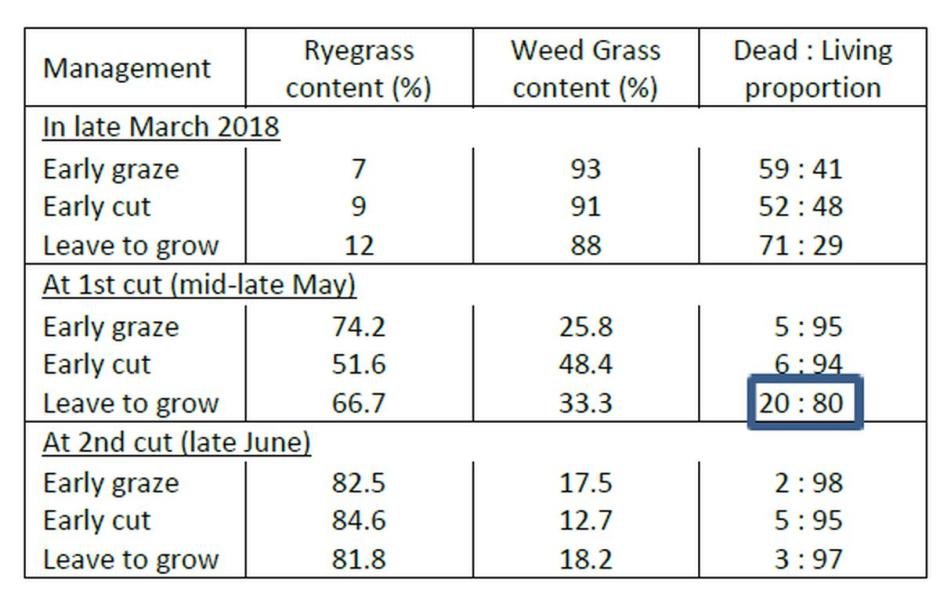
Guidance for the 2019 season
As a result of this study, AFBI would advise that where a silage sward in early spring appears to be dominated by poorer grass species and has a relatively high proportion of dead material, this grass cover can be removed by either cutting and baling or grazing, which itself has a value. Whilst this practice is likely to result in a lower yield, it will produce higher quality (higher energy) herbage at first cut.
In summary, for managing silage swards that have heavy, over-wintered covers:
- These should be assessed for the level of dead material present. If this is excessive (picture 2) a decision to defoliate these swards in early spring will reduce the amount of dead material present in the sward at first cut and improve herbage quality.
- If the swards have heavy covers but are green with acceptable levels of dead material present (picture 3) as was the case in mid-January this year, leaving them to grow on is likely to provide the same yield advantage as in 2017, but with an expected lower drop in quality.
- If there is concern about being able to ensile enough grass for the herd requirements for next winter then leaving swards with high levels of dead material to grow on will still maximise the silage yields over two cuts. However, the grass quality penalty at the first cut will be costly to correct with extra concentrate feed use next winter.
Using this knowledge, farmers should weigh up their options if they want to recover swards that are in poor condition in early spring. This will be influenced by their expectations for yield and quality especially for first cut silage, and the need to make best use of available farm resources in a cost-effective and sustainable manner.
Notes to editors:
AFBI carries out high quality technology research and development, statutory, analytical, and diagnostic testing functions for DAERA and other Government departments, public bodies and commercial companies.AFBI's Vision “Advancing the Local and Global Agri-Food Sectors Through Scientific Excellence”.All media enquiries to AFBI Press Office